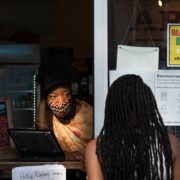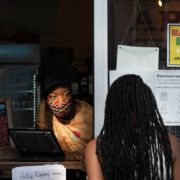Mellon Foundation to Spend $250 Million to Reimagine Monuments | The New York Times
The initiative, the largest in the organization’s history, will support the creation of new monuments, as well as the relocation or rethinking of existing ones.
— JENNIFER SCHUESSLER, THE NEW YORK TIMES
The Andrew W. Mellon Foundation, the largest humanities philanthropy in the United States, has pledged to spend $250 million over five years to help reimagine the country’s approach to monuments and memorials, in an effort to better reflect the nation’s diversity and highlight buried or marginalized stories.
The Monuments Project, the largest initiative in the foundation’s 50-year history, will support the creation of new monuments, as well as the relocation or rethinking of existing ones.
And it defines “monument” broadly to include not just memorials, statues and markers but also “storytelling spaces,” as the foundation puts it, like museums and art installations.
— Credits
Featured Image, In July, in Richmond Va., a photograph of Breonna Taylor was projected onto a statue of the Confederate general Robert E. Lee.Credit…Jim Lo Scalzo/EPA, via Shutterstock
Full article @ The New York Times
— Related
Black Lives Matter (BLM) is a decentralized political and social movement advocating for non-violent civil disobedience in protest against incidents of police brutality and all racially motivated violence against black people. The broader movement and its related organizations typically advocate against police violence towards black people, as well as for various other policy changes considered to be related to black liberation.
In July 2013, the movement began with the use of the hashtag #BlackLivesMatter on social media after the acquittal of George Zimmerman in the shooting death of African-American teen Trayvon Martin 17 months earlier, in February 2012. The movement became nationally recognized for street demonstrations following the 2014 deaths of two African Americans: Michael Brown—resulting in protests and unrest in Ferguson, Missouri, a city near St. Louis—and Eric Garner in New York City. Since the Ferguson protests, participants in the movement have demonstrated against the deaths of numerous other African Americans by police actions or while in police custody. In the summer of 2015, Black Lives Matter activists became involved in the 2016 United States presidential election. The originators of the hashtag and call to action, Alicia Garza, Patrisse Cullors, and Opal Tometi, expanded their project into a national network of over 30 local chapters between 2014 and 2016. The overall Black Lives Matter movement is a decentralized network of activists with no formal hierarchy.
Source – Black Lives Matter (Updated: 18 October 2020) Wikipedia. Available at https://en.wikipedia.org/wiki/Black_Lives_Matter, (Accessed: 19 October 2020)
Published at Mon, 19 Oct 2020 16:39:02 +0000


